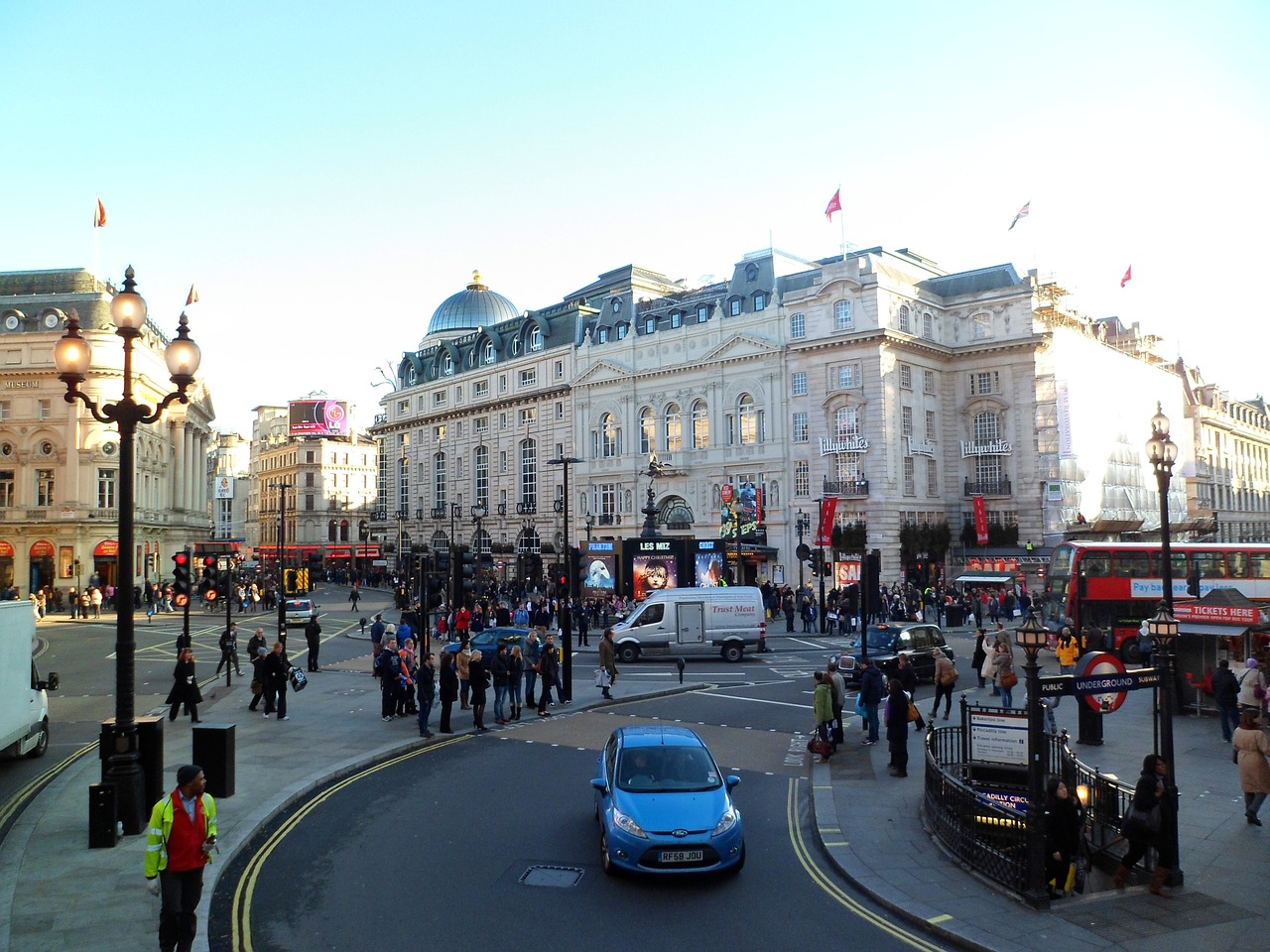Take a stroll with us through the architectural panorama of London. Each building tells a unique story here, sparking lively debates and inspiring awe. More than mere constructions, these structures symbolise London’s multifaceted architectural scene. As we weave through the city’s streets, we’ll uncover the distinct personalities of these buildings, each playing a pivotal role in the vast, vibrant tapestry that forms London’s skyline.
Our journey is an intimate glimpse into the city’s architectural heart. We’re not just viewing buildings; we’re engaging with the living history and dynamic future they represent. From the Walkie Talkie’s commanding presence to the Barbican Estate’s intriguing complexity, every stop on our tour is a chapter in London’s rich architectural story.
The Walkie Talkie (20 Fenchurch Street)
The Walkie Talkie, situated in London’s historic commercial district, is a striking example of modern architectural ambition. Its unique, bulging shape has been a topic of debate, primarily due to the unintended “death ray” effect and significant wind draughts caused by its design. These issues have been addressed through thoughtful architectural modifications.
Elephant and Castle Shopping Centre
The Elephant and Castle Shopping Centre, a fixture in South London since 1965, reflects post-war architectural trends. It’s undergoing a significant transformation, promising to rejuvenate this historical site.
Strata SE1
Strata SE1, notable for its rooftop wind turbines, illustrates the challenge of incorporating sustainable design into urban architecture. Though a symbol of environmental awareness, the turbines have been more decorative than functional.
The Barbican Estate
The Barbican Estate, a prime example of Brutalist architecture, has been a subject of varied opinions. Its extensive concrete design offers tranquillity in central London but has also been critiqued for being difficult to navigate.
The Scottish Parliament Building
Edinburgh’s Scottish Parliament Building stands as a striking piece of contemporary architecture known for sparking lively debates. It faced challenges with a delayed opening and budget overruns, drawing public and professional attention. Despite these hurdles, the building is widely praised for its inspirational interior design, which profoundly contrasts its unique and often debated exterior. This juxtaposition of inside and outside elements highlights the building’s complex character and its significant place in modern architectural discourse.
Southbank Centre
Nestled along the Thames riverside, the Southbank Centre, with its Brutalist architecture, is a striking feature of London’s urban landscape. The complex, notably the National Theatre, is renowned for its ‘concrete jungle’ aesthetic. Its robust, fortress-like façade makes it a standout landmark.
This architectural marvel isn’t just about its imposing appearance; it’s a hub of artistic and cultural activity, offering a stark but fascinating contrast to the more traditional architectural styles along the river. The Southbank Centre is a testament to the post-war architectural vision, inviting admiration and introspection.
The Bloomsbury and Hazlitt Hotels
The Bloomsbury and Hazlitt Hotels are oases of vintage luxury amidst the fast-paced rhythm of the city. These establishments are more than places to stay; they are gateways to a bygone era, seamlessly blending contemporary comforts with traditional elegance. Their designs evoke a deep nostalgia, transporting guests back to a time of classic sophistication. Amidst the bustling cityscape, these hotels offer a tranquil retreat, showcasing the harmonious blend of London’s historical charm and modern luxury.
Tate Britain and Albert Museum
Tate Britain and the Albert Museum are cornerstones of London’s cultural and architectural heritage. Housing vast collections of art, these institutions are not just galleries but custodians of history, showcasing the evolution of British architecture and culture.
Each gallery and exhibit within its walls tells a story, connecting visitors to the artistic and architectural journey of the nation. These buildings are architectural marvels, blending historical design with modern elements, thus embodying London’s dynamic and ever-evolving spirit.
The Ongoing Dialogue of London’s Architecture
London’s architectural landscape is a fascinating mosaic of styles, eras, and philosophies. Each building we’ve explored is more than just a structure; it’s a conversation piece, a historical marker, and a reflection of the city’s ever-evolving identity.
As we walk the streets of London, we are not just observers but participants in an ongoing dialogue between the past, present, and future of architectural expression. In all their diversity, these buildings challenge us to think, question, and appreciate the multifaceted nature of urban design. They testify to London’s enduring spirit of innovation and its unceasing quest to redefine the skyline.




